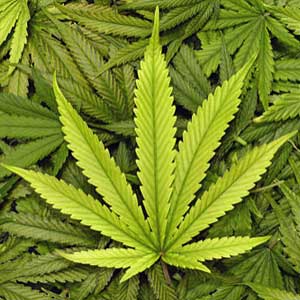ANALYSIS ANALYSIS OF MYCOTOXINS IN CANNABIS PLANTS AND CANNABIS-CONTAINING PRODUCTS OF MYCOTOXINS IN CANNABIS PLANTS AND CANNABIS-CONTAINING PRODUCTS
State regulations have established maximum allowed levels for Mycotoxins in Cannabis-containing products sold to consumers at the following maximum levels: levels for total Aflatoxins G1, G2, B1 and B2 are set at < 20 ppb and levels for Ochratoxin A at < 20 ppb. Pickering Laboratories developed an easy and sensitive method to analyze Aflatoxins B1, B2, G1, G2 and Ochratoxin A in cannabis plants and edible products. Mycotoxins are isolated using immunoaffinity clean-up columns and analyzed with fluorescence detection. To increase sensitivity of Aflatoxins B1 and G1, an in-line photochemical reactor is installed before the detector. This method utilizes standard HPLC equipment and allows testing laboratories to easily determine Mycotoxins at levels below the limits established by state regulations.
Click to download Analysis of Mycotoxins in Cannabis Plants and Cannabis Containing Products (MA241).
ANALYSIS OF AMINO ACIDS IN DIETARY INGREDIENTS AND SUPPLEMENTS
Analysis of amino acids using cation-exchange columns and Ninhydrin post-column reagent is well-establish methodology that is recommended by the European Pharmacopeia. Pickering Laboratories developed and validated a post-column method for amino acids analysis of dietary supplements that is sensitive, selective and can be used without modifications to analyze capsules, tablets, drinks and other samples. Accelerated methods are available for samples with a limited number of amino acids.
Click to download Analysis of Amino Acids in Dietary Ingredients and Supplements (MA397)


 Broader acceptance of medical cannabis use increases the need for analytical methods capable of determining the active compounds of cannabis as well as for methods to detect contaminations, such as pesticide residues, mycotoxins and traces of organic solvents. Cannabinoids are a class of terpenophenolic compounds that are associated with the pharmacological activity of cannabis. Cannabinoids exist in the plant mainly as carboxylic acids that are not physiologically active. They are converted to neutral analogs by light and heat while in storage or during the preparation of edible products. Acids are also converted to neutral analogs during GC analysis, which often causes differences in results when comparing with HPLC methods.
Broader acceptance of medical cannabis use increases the need for analytical methods capable of determining the active compounds of cannabis as well as for methods to detect contaminations, such as pesticide residues, mycotoxins and traces of organic solvents. Cannabinoids are a class of terpenophenolic compounds that are associated with the pharmacological activity of cannabis. Cannabinoids exist in the plant mainly as carboxylic acids that are not physiologically active. They are converted to neutral analogs by light and heat while in storage or during the preparation of edible products. Acids are also converted to neutral analogs during GC analysis, which often causes differences in results when comparing with HPLC methods.
